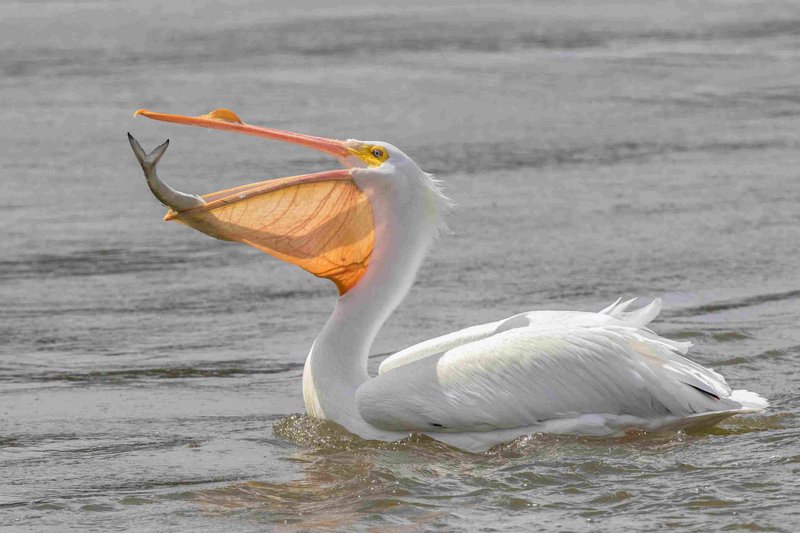
Imagine sitting by the shore, watching pelicans as they interact with each other. You might hear a series of honks, growls, and croaks that seem to echo the rhythm of the waves. It’s not just random noise; each sound serves a purpose, whether it’s to attract a mate or signal alarm. Understanding these vocalizations can deepen your appreciation for these amazing birds, much like understanding a song’s lyrics can enhance your enjoyment of the music. So, let’s dive into the different types of pelican vocalizations and the fascinating meanings behind them.
The Different Sounds Pelicans Make
Pelicans are known for their diverse range of vocalizations. Each sound they make has a specific purpose, almost like a language of their own. Here’s a breakdown of some common sounds:
- Honks: These are probably the most recognizable sounds pelicans make. They often honk when communicating with their mates or signaling to their young. It’s a friendly sound, reminiscent of a conversation between friends.
- Growls: When pelicans feel threatened or are defending their territory, they might produce deep growling sounds. Think of it as their way of saying, “Back off!”
- Grunts: These sounds are typically softer and are used in more peaceful interactions. Grunting can communicate comfort and reassurance among group members.
- Whistles: Some pelican species use whistling sounds as a way to attract mates during the breeding season. It’s like serenading a partner!
Each of these vocalizations plays a crucial role in pelican life. Whether they’re nurturing their young or protecting their territory, their sounds help build social bonds and maintain order within their colonies.
The Purpose Behind Pelican Vocalizations
Understanding why pelicans make these sounds is key to appreciating their behavior. Vocalizations serve multiple purposes, from mating rituals to warning signals.
Firstly, during mating season, male pelicans often use their vocalizations to attract females. The honks and whistles that echo across the beach signal their readiness to find a mate. It’s a bit like a musical audition, where the best vocalists catch the attention of potential partners. Females listen carefully to these calls to choose the most suitable mate.
Secondly, pelicans rely on vocalizations as a means of communication among their young. When the chicks are in the nest, parents use softer sounds to call them, helping to keep the family unit together. A series of gentle honks or grunts can reassure young pelicans, letting them know their parents are nearby and ready to feed them.
Lastly, vocalizations play a crucial role when pelicans feel threatened. When a predator approaches, a pelican might emit a sharp growl to warn others of potential danger. This quick communication helps ensure the safety of the entire colony, allowing them to react swiftly and avoid threats.
Pelicans are adaptive birds, and their vocalizations can change based on their environment. This adaptability is essential for their survival.
For instance, when pelicans are in crowded nesting areas, their calls might become louder and more frequent. This increase in vocalizations is a way to cut through the noise of their bustling colony, ensuring that their messages reach the right audience. Imagine being in a room full of friends chatting excitedly; you’d likely raise your voice to be heard!
On the flip side, in quieter settings, pelicans tend to use softer sounds. These gentler vocalizations help maintain peace within the group while still facilitating essential communication. It’s all about adjusting their “volume” according to their surroundings, much like how we speak differently in a library compared to a party.
This environmental adaptability illustrates just how intelligent and socially aware pelicans are. They have a keen sense of how to navigate their surroundings, ensuring they can communicate effectively no matter where they are.
Pelican Vocalizations and Social Structure
Pelican vocalizations play a surprisingly significant role in establishing social hierarchies within their colonies. Just like people might use tone and volume to assert dominance or show submission, pelicans do this too.
In many cases, dominant pelicans may use deeper growls or loud honks to assert their position. Other birds might back off in response, recognizing that the vocalization signals authority. Think of it as a conversation where one person speaks assertively, and everyone else listens.
On the other hand, submissive pelicans might use softer, more tentative sounds. If you see a pelican making shy grunting noises, it might be signaling that it’s not looking for a confrontation or is simply a younger bird trying to find its place in the group. This vocal behavior helps maintain harmony and reduces conflicts within the colony.
Interestingly, these vocalizations can even change during breeding season. During this time, the dynamics of the social structure may shift, and pelicans might use their calls to attract mates or fend off rivals. It’s a time when vocalizations become crucial for both competition and courtship, highlighting the layers of complexity within their social interactions.
Why Understanding Pelican Sounds Matters
You might be wondering why it’s important to understand pelican vocalizations. Well, for starters, studying these sounds can provide valuable insight into the health and behavior of pelican populations. Changes in vocal patterns might indicate stress or environmental pressures, giving researchers clues about ecological changes.
Moreover, for bird watchers or nature enthusiasts, being able to identify pelican sounds adds a richer layer to the experience. Imagine standing by the water, not just watching these graceful birds but also interpreting their calls. It’s like getting a peek behind the scenes of their world.
Understanding pelican vocalizations can also help with conservation efforts. By monitoring their sounds, experts can gather data about their populations and any challenges they face. This information is crucial for preserving their habitats and ensuring that they thrive for generations to come.
Ultimately, by learning about these vocalizations, we deepen our connection to nature. It fosters appreciation not only for pelicans but for the broader ecosystem they inhabit.
Pelican vocalizations are more than just noise; they are an intricate language filled with meaning and purpose. From their honks and growls to soft grunts and whistles, each sound serves a crucial role in their social lives. Understanding these vocalizations can enhance our appreciation for these remarkable birds and give us deeper insight into their behaviors and interactions.
So, the next time you’re near a body of water and see pelicans soaring gracefully overhead, take a moment to listen. Their calls are a beautiful reminder of the complexity and vibrancy of nature. Just like a song, every note has a meaning and a purpose, weaving together the lives of these fascinating creatures. It’s a harmonious world out there, and we’re lucky to be part of it.

